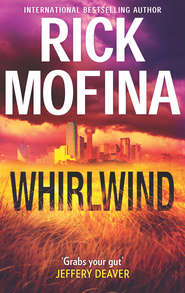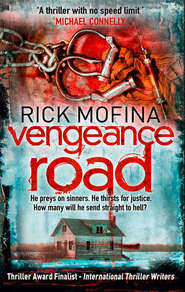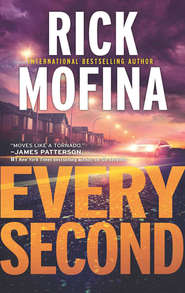По всем вопросам обращайтесь на: info@litportal.ru
(©) 2003-2025.
✖
Six Seconds
Автор
Год написания книги
2018
Настройки чтения
Размер шрифта
Высота строк
Поля
“She spoke to me, Mike.”
“What’d she say?”
“It wasn’t clear. But I’ve got a feeling that this wasn’t an accident. We need to be on this. I want this case, Mike.”
A long moment passed.
“Okay. I’ll tell Fornier. You’re the lead. For now. If it’s criminal, it stays with us in Major Crimes. If it’s not, you kick it back to Fornier’s people. Look, Prell’s in Canmore on another matter, I’m sending him to you now, to give you a hand.”
“Prell? Who’s Prell?”
“Constable Owen Prell. Just joined us in Major Crimes from Medicine Hat.”
“Fine, thanks, Mike.”
“You sure you’re good to take this on. You’ve got two fatals so far and the river’s likely to give you more.”
“I’m good.”
“Better get yourself to the scene where they found the boy.”
5
Faust’s Fork, near Banff, Alberta, Canada
The boy’s face was flawless.
Almost sublime in death.
His eyes were closed. Not a mark on his skin. He had the aura of a sleeping cherub as a breeze lifted strands of his hair, like a mother tenderly coaxing him to wake and play.
His resemblance to the girl was clear. He was older, likely her big brother. His jeans were faded, his blue sweatshirt bore a Canadian Rockies insignia, his sneakers were a popular brand and in good shape. He looked about eight or nine and so small inside the open body bag.
Who is he? What were his favorite things? Hisdreams? His last thoughts? Graham wondered, kneeling over him on the riverbank with Liz DeYoung, the medical investigator from the Calgary Medical Examiner’s Office.
“What do you think?” Graham raised his voice over the river’s rush. “Accident, or suspicious?”
“Way too soon to tell.” DeYoung was wearing blue latex gloves and, using the utmost care, she grasped the boy’s small shoulders and turned him. The back of his skull had been smashed in like an eggshell, exposing cranial matter. “It appears the major trauma is here.”
“From the rocks?”
“Probably. We’ll know more after we autopsy him, and the girl, back in Calgary. At this stage, Mother Nature’s your suspect.”
Graham glimpsed De Young’s wristwatch and updated his case log using the pen, notebook and clipboard he’d borrowed from the Banff members helping at the scene.
“No life jackets,” Graham said.
“Excuse me?”
“The girl didn’t have one. He doesn’t have one. Did anyone see life jackets?”
“No. But if you’ve got a reason to be suspicious, would you share it?”
“It’s just a feeling.”
“A feeling?”
“Forget it. I’m still thawing out. Did you find any ID? Items in his pockets? Clothing tags?”
“No. Except for a little flashlight and a granola bar, nothing. Look, you guys do your thing. Get us some names and a next of kin, so we can request dental records to confirm. You know the drill.”
He knew the drill.
“So we’re good to move him?” DeYoung had a lot of work ahead of her.
Graham didn’t answer. He was staring at the boy, prompting her to look at him with a measure of concern.
“Are you okay?”
DeYoung knew something of Graham’s personal situation and took quick stock of him, blinking at a memory.
“Dan, you know the only time I ever met Nora was last Christmas. We all sat together at the attorney general’s banquet. We hit it off. Remember?”
He remembered.
“I’m so sorry. I missed her service. I was at a conference in Australia.”
“It’s okay.”
“How are you doing? Really?”
His gaze shifted from the boy’s corpse to the river, as if the answer to everything was out there.
He stood. “You can move him now.”
DeYoung closed the bag. Her crew loaded it onto a stretcher, strapped it in three areas, then carried it carefully up the embankment to their van. Graham watched the van inch along the trail, suspension creaking as it tottered to the back road. Then it was gone.
For a moment, he stood alone in the middle of the scene.
It had been cordoned on three sides with yellow tape. He was wearing latex gloves and shoe covers. Nearby, members of the RCMP Forensic Identification Section out of Calgary, in radiant white coveralls, looked surreal against the dark rocks and jade river, working quietly taking pictures, measuring, collecting samples of potential evidence.
All in keeping with a fundamental tenet known to all detectives.
A wilderness death can be a perfect murder. Treat itas suspicious because you don’t know the truth until youknow the facts.
Graham resumed studying his clipboard, paging through the handwritten statements and notes he’d taken from the people who’d found the boy. Haruki Ito, age forty-four, photographer from Tokyo, was first. He’d flagged the women on bicycles. Ingrid Borland, age fifty-one, a librarian from Frankfurt, and Marlena Zimmer, age thirty-three, a Web editor from Munich. They all seemed to be pretty straight-up tourists.
Nothing unusual regarding their demeanor.











